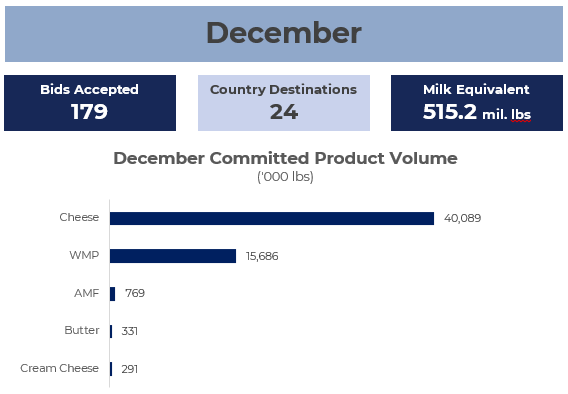The National Milk Producers Federation congratulates President Donald Trump and the leaders of the new Congress and administration and is ready and eager to work on a wide range of challenging issues as the new government takes shape.
“Congratulations to President Donald Trump and Vice President JD Vance as a new administration begins,” said NMPF President & CEO Gregg Doud. “As the nation’s representative of dairy farmers and the cooperatives they own, we will work with our nation’s leaders on the Trump-Vance team and in Congress to help America prosper and for its world-leading dairy industry to grow and thrive.”
Doud also congratulated the agriculture leaders of the recently sworn-in 119th Congress. Rep. Glenn “GT” Thompson, R-PA, continues as chairman of the House Agriculture Committee, while Arkansas Republican Sen. John Boozman takes over the Senate’s farm panel. Both committee ranking Democrats, Sen. Amy Klobuchar and Rep. Angie Craig, come from Minnesota.
“U.S. agriculture is blessed with strong, bipartisan leadership on its agricultural committees,” Doud said. “We are grateful for GT Thompson’s leadership on whole milk legislation and his successful advocacy on the “higher of,” as well drafting an overall strong farm bill that met dairy needs and his work on the Dairy Margin Coverage Program,” Doud said. “Meanwhile, Rep. Craig has been a strong supporter on many dairy issues, an active voice on agricultural trade, and a co-leader on bipartisan feed legislation to support innovation in dairy.
“In the Senate, Sen. Boozman also released a strong farm bill framework that included numerous key dairy items, and we are grateful for his advocacy on agricultural tax issues among other dairy priorities,” Doud said. “And Sen. Klobuchar as the new ranking member has been a tireless champion of dairy through her work on Dairy Margin Coverage, her sponsorship of the Ocean Shipping Reform Act, her attention to Canada trade issues, and her support for whole milk.
Doud also called for swift confirmation of Brooke Rollins to become the next Agriculture Secretary, and noted the many key issues that await her, the administration and the new Congress over the next few months. Just a few of them include:’
- Passing a five-year farm bill
- Meeting agricultural workforce needs
- Creating new trade opportunities
- Bringing whole milk into school lunches
- Building an FDA that enforces its own standards of identity
- Ensuring a fair tax system that allows dairy producers and cooperatives to thrive.
“We couldn’t be more excited about our government’s leadership as 2025 begins,” Doud said.







